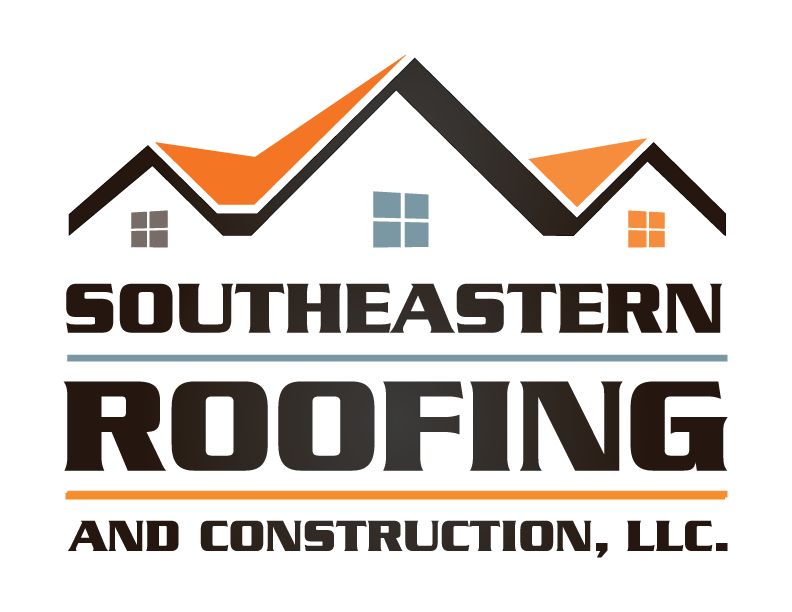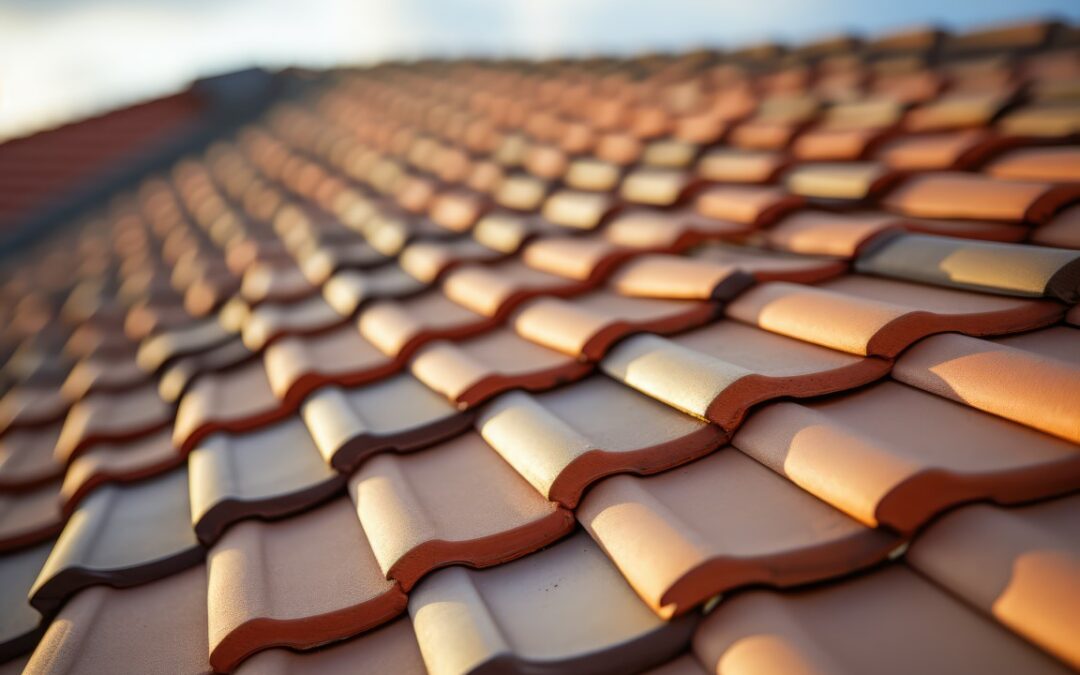Are you looking to prolong the lifespan of your roof? We’ve got you covered with these 8 best practices.
Regular inspections, proper attic ventilation, prompt leak repairs, gutter cleaning, tree trimming, roof cleaning, roof coatings, and flashing maintenance are essential for maintaining a sturdy roof.
Our team has compiled these tips to ensure your roof stands strong for years. Let’s dive into these practices and give your roof the care it deserves.
Key Takeaways
- Regular roof inspections and maintenance are essential for detecting potential issues early and preventing serious problems.
- Proper attic ventilation is crucial for preventing condensation, and mold growth, and extending the lifespan of the roof.
- Prompt repair of roof leaks is necessary to prevent further damage and maintain the structural integrity of the building.
- Regular gutter cleaning and tree trimming/removal are important practices for preventing water damage, improving drainage, and minimizing clogged gutters.
Regular Roof Inspections
To ensure the longevity of your roof, we must regularly conduct roof inspections. Early detection is key to preventing major issues and costly repairs down the line. By inspecting your roof regularly, we can identify any potential problems such as loose or missing shingles, leaks, or damage caused by weather conditions.
Through these inspections, we can take preventive measures, such as repairing or replacing damaged areas, sealing any cracks or gaps, and clearing debris that could lead to clogged gutters and water buildup.
These proactive steps help maintain your roof’s integrity, extend its lifespan, and prevent more serious issues from arising. Regular roof inspections are an essential part of roof maintenance and ensure the long-term protection of your home.
Proper Attic Ventilation
For optimal roof lifespan, we prioritize ensuring proper attic ventilation. Proper attic ventilation plays a crucial role in maintaining the health and longevity of your roof. It allows for the escape of hot air and moisture that can accumulate in the attic space. This prevents the formation of condensation, which can lead to the growth of mold and mildew, causing damage to the attic insulation and compromising the structural integrity of the roof.
Additionally, proper attic ventilation helps to regulate the temperature in the attic, reducing the strain on your HVAC system and improving energy efficiency. By providing consistent airflow, attic ventilation benefits include extending the lifespan of your roof and preventing costly repairs down the line. However, inadequate ventilation can lead to a buildup of heat and moisture, which can accelerate the deterioration of roofing materials. Therefore, it’s essential to ensure proper attic ventilation to maximize the lifespan of your roof.
To further protect your roof, prompt repair of roof leaks is crucial.
Prompt Repair of Roof Leaks
We prioritize prompt repair of roof leaks as it’s essential for prolonging the lifespan of our roof. Roof leaks can occur due to various reasons, such as damaged shingles, clogged gutters, or improper flashing installation.
To prevent roof leaks, regular inspections should be conducted to identify any signs of damage or deterioration. Early detection is crucial in preventing minor leaks from turning into major problems that can cause extensive damage to the roof structure and interior of the building.
Once a roof leak is identified, it’s important to address it promptly. Ignoring a roof leak can lead to further damage, including mold growth, rotting of the roof deck, and compromised structural integrity.
Regular Gutter Cleaning
We make it a priority to regularly clean our gutters to ensure the longevity and durability of our roof. Regular gutter cleaning is crucial in preventing water damage and improving drainage.
Over time, debris such as leaves, twigs, and dirt can accumulate in the gutters, causing blockages that hinder the proper flow of water. These blockages can lead to water overflowing onto the roof, resulting in leaks, rotting, and structural damage.
By regularly cleaning our gutters, we remove this debris and allow water to flow freely, preventing potential damage to the roof and the overall structure of our home. Improved drainage also helps to prevent water from pooling near the foundation, reducing the risk of foundation issues.
Therefore, regular gutter cleaning is an essential practice for maintaining the health and longevity of our roof.
Tree Trimming and Removal
When it comes to prolonging the lifespan of your roof, tree trimming and removal play a crucial role. By keeping branches away from your roof, you can prevent potential damage caused by rubbing and falling debris.
Additionally, trimming trees around your house allows more natural light to reach your roof, preventing the growth of moss and algae.
Lastly, regular tree maintenance reduces the accumulation of leaves and twigs, minimizing the risk of clogged gutters and water damage.
Prevents Roof Damage
To prevent roof damage, one must prioritize tree trimming and removal. Trees, especially those that are close to the house, can pose a significant risk to the roof. Falling branches can cause severe damage to the roof’s surface, leading to leaks and structural issues.
By implementing preventive measures, such as regular tree trimming and removal, homeowners can mitigate these risks and prolong the lifespan of their roofs. Trimming trees away from the roofline eliminates the chance of branches rubbing against the surface during high winds or storms. Additionally, removing trees that are too close to the house altogether can further reduce the risk of roof damage.
These weatherproofing techniques help create a safer environment for the roof and ensure its longevity.
Now, let’s move on to another important aspect of roof maintenance that enhances natural light.
Enhances Natural Light
By trimming and removing trees, we can enhance the natural light in our homes and promote a brighter, more inviting atmosphere. This practice not only increases energy efficiency but also improves indoor air quality.
When trees grow close to our homes, they can block sunlight from entering our windows, resulting in the need to rely more on artificial lighting during the day. By trimming or removing these trees strategically, we can maximize the amount of natural light that enters our living spaces. This reduces our dependence on artificial lighting, resulting in lower energy consumption and decreased utility bills.
Additionally, increased natural light can help improve the overall indoor air quality by reducing the presence of mold and dampness, which thrive in dark and poorly lit areas. With enhanced natural light, our homes become more comfortable and welcoming, creating a sense of belonging and harmony.
Reduces Debris Accumulation
One effective method for reducing debris accumulation and prolonging the lifespan of a roof is through the strategic trimming and removal of trees. By carefully trimming branches that overhang the roof, we can prevent leaves, twigs, and other debris from falling onto the roof surface. This debris can accumulate over time and cause damage to the roof, leading to leaks and deterioration.
In addition to regular tree trimming, installing leaf guards can further minimize debris accumulation. Leaf guards are protective devices that cover gutters and downspouts, preventing leaves and other debris from entering the drainage system. This reduces the risk of clogs and ensures that rainwater flows freely off the roof.
To ensure the longevity of your roof, consider incorporating tree trimming and leaf guards into your roof maintenance plan or consult professional roof cleaning services for assistance.
Regular Roof Cleaning
Regular roof cleaning is essential for maintaining the lifespan of our roofs. It’s a crucial aspect of roof maintenance and plays a vital role in preventing roof deterioration.
Over time, roofs accumulate dirt, leaves, and other debris that can trap moisture and promote the growth of algae, moss, and mildew. These elements can weaken the roof’s structure and cause damage over time. Regular cleaning helps remove these contaminants, preventing them from causing further deterioration and extending the lifespan of the roof.
Additionally, cleaning allows for early identification of any potential issues such as cracked shingles or damaged flashing, enabling timely repairs before they escalate into more significant problems.
Installing Roof Coatings
To prolong the lifespan of our roofs, we can enhance their durability by applying roof coatings. Roof coatings offer numerous benefits, including protection against UV radiation, extreme temperatures, and water damage. By creating a seamless, waterproof barrier, these coatings prevent leaks and reduce the risk of structural damage. Additionally, roof coatings can improve energy efficiency by reflecting sunlight and reducing heat absorption.
When applying roof coatings, there are several methods to consider. These include spray application, roller application, and brush application. The chosen method depends on the type of coating and the roof’s specific needs. It’s important to properly prepare the roof surface by cleaning and repairing any damage before applying the coating.
By following these application methods, we can effectively protect our roofs and extend their lifespan. Now, let’s move on to the next section, where we’ll discuss the maintenance of roof flashings.
Maintenance of Roof Flashings
Moving on from the previous subtopic of installing roof coatings, we’ll now discuss how we can effectively maintain roof flashings to prolong the lifespan of our roofs.
Proper roof flashing installation is crucial for preventing water leakage and ensuring the structural integrity of the roof. Regular inspection and maintenance of roof flashings are essential to identify and address any problems early on.
Common flashing problems include cracks, gaps, and deterioration due to weathering or improper installation. To maintain roof flashings, it’s important to clean debris regularly, check for signs of damage or wear, and promptly repair any issues.
Additionally, applying sealant around flashings can provide extra protection against water infiltration. By diligently maintaining roof flashings, we can safeguard our roofs from potential damage and extend their lifespan.
Conclusion
In conclusion, by following these eight best practices for prolonging roof lifespan, you can ensure the longevity and durability of your roof. Regular inspections, proper ventilation, prompt repairs, gutter cleaning, tree trimming, roof cleaning, roof coatings, and flashings maintenance are all essential for protecting your investment. Don’t wait for your roof to deteriorate, take action now and enjoy a worry-free and long-lasting roof for years to come.

